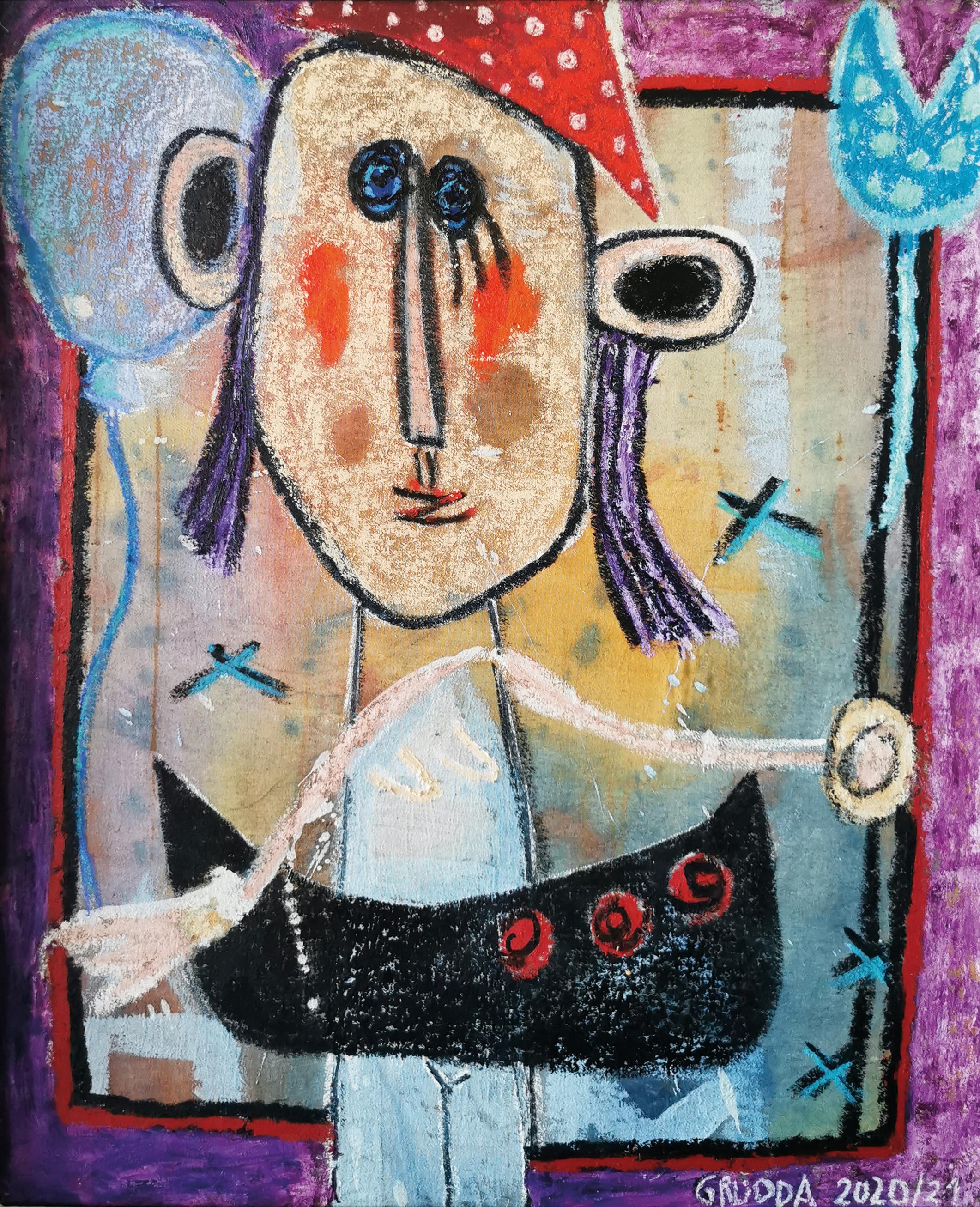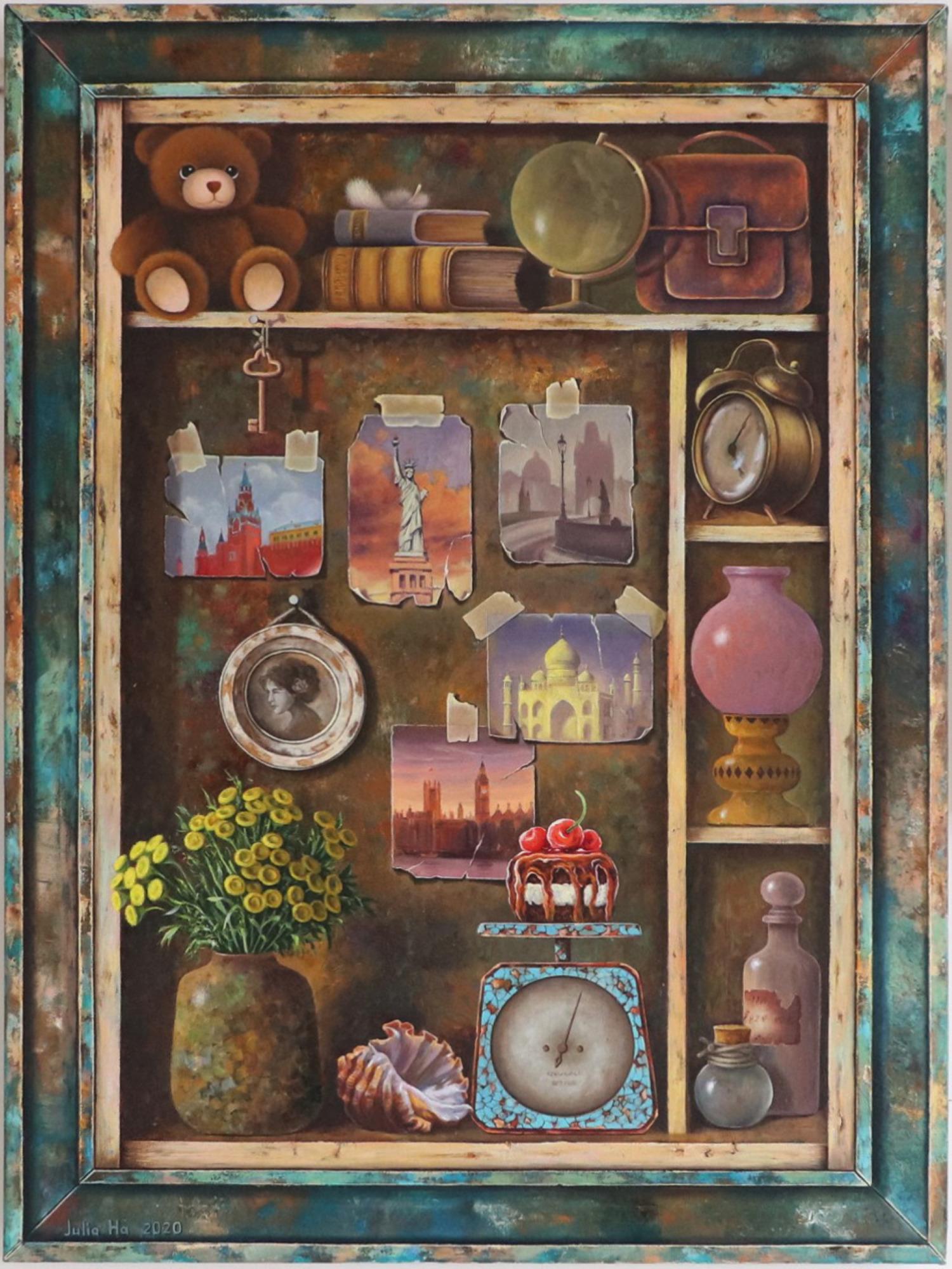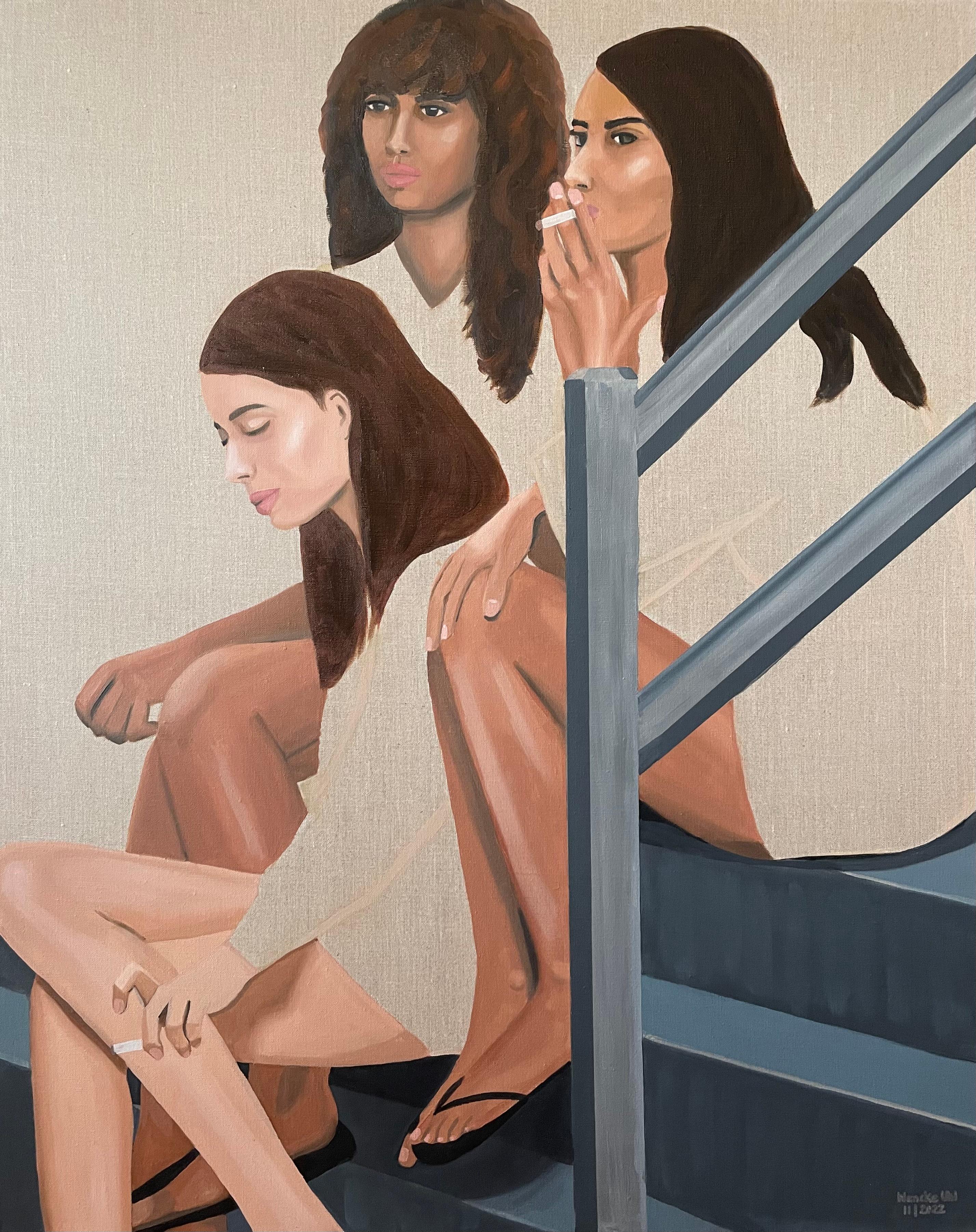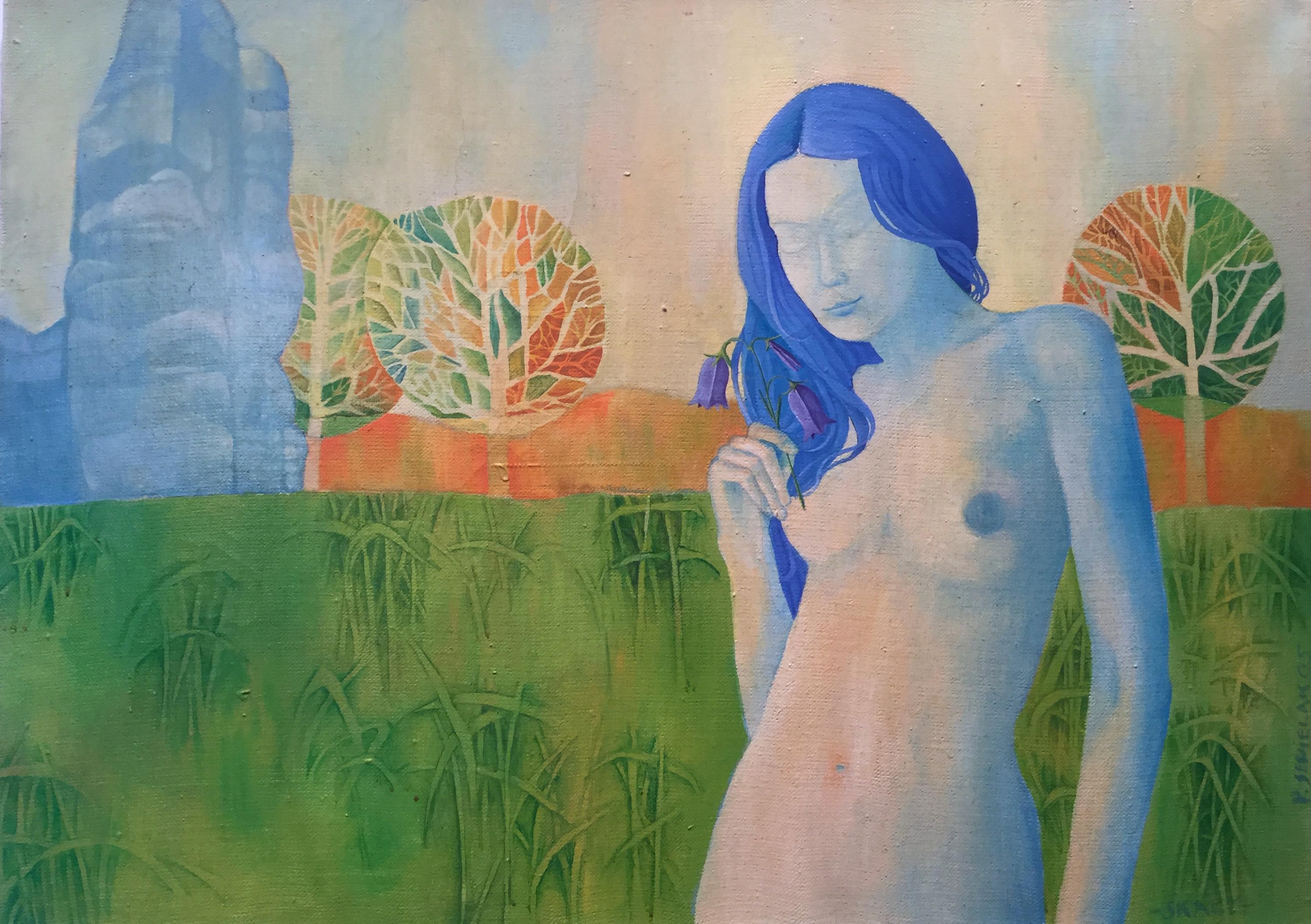Vincenzo CamucciniItalian artist Camuccini Neoclassical Roman History Painting 19th oil canvas1800-1802
1800-1802
About the Item
- Creator:Vincenzo Camuccini (1771 - 1844, Italian)
- Creation Year:1800-1802
- Dimensions:Height: 15 in (38.1 cm)Width: 12.9 in (32.77 cm)
- Medium:
- Period:
- Condition:
- Gallery Location:Florence, IT
- Reference Number:1stDibs: LU1240210334612
Vincenzo Camuccini
Vincenzo Camuccini, sometimes also referred to as Camucini, was one of the most important Italian Neoclassicists and history painters, despite having lived in a period in which romantic culture had taken hold within the European artistic-literary landscape. It was Pietro, Camuccini's brother, who became famous for cleaning up Michelangelo's Last Judgment in 1824-25, and who carried out various restorations for the Borghese, to push Vincenzo towards art. Every day, Camuccini visited Raphael's Rooms and trained himself to copy the style of that period. In adolescence, he first went to the school of Domenico Corvi and later to the most famous of David. In addition to studying the masterpieces of classical sculpture and Renaissance painting, Camuccini was very fond of representing everyday reality, portraying both nature and the people of the street to study their expressions and give their paintings as realistic a note as possible. Probably in this, the painter was influenced by Romanticism, very attentive to the beauty and grandeur of nature, in all its details. His interest in the realistic rendering of the subjects led him to attend hospital environments to perform studies on corpses. After spending years copying the greatest of art history, Camuccini began to create works of his own invention. His fame grew over the years, leading him to receive increasingly important commissions, up to the appointment by Pope Pius VII as director general of the Fabbrica di San Pietro and to the superintendency of the Vatican Museums, which over the years had been illustrious by artists such as Michelangelo, Maderno and Bernini. For the pontiff, he created The Incredulity of St. Thomas and a St. Simon and Judas, two large canvases for St. Peter's Basilica. At the same time, Vincenzo Camuccini opened an important atelier in Rome, frequented by many Italian and foreign artists.
- ShippingRetrieving quote...Ships From: Florence, Italy
- Return PolicyA return for this item may be initiated within 2 days of delivery.
- Signed G B Dell'Era Portrait Painting dated 1784 oil canvasLocated in Florence, ITThis portrait is extremely important in the reconstruction of the corpus and of the life of the artist thanks to a significant inscription on the back of the canvas that says “Ritrat...Category
1780s Other Art Style Portrait Paintings
MaterialsOil, Canvas
- Dutch Bamboccianti Jacob van Huchtenburg Rome Market 1674 Oil canvasBy Jacob Van HuchtenbergLocated in Florence, ITThe Market in Piazza del Popolo is a work by the Flemish painter Jacob van Huchtenburg, born in Haarlem and present, in the early 1660s, in Rome, in close contact with his compatriot...Category
1670s Other Art Style Still-life Paintings
MaterialsOil, Canvas
- German Tischbein Figurative Nude Mithology Painting 18th centuryoil canvasBy Johann Heinrich Wilhelm TischbeinLocated in Florence, ITThe painting–thin oil on canvas, in some parts unfinished−can be referred to the hand of the German painter Johann Heinrich Wilhelm Tischbein. It should be dated in the years between...Category
1780s Other Art Style Nude Paintings
MaterialsOil, Canvas
- Mythology Monochrome Frieze Tuscan Neoclassic Art Pietro Benvenuti 18th centuryLocated in Florence, ITThis interesting grisaille […] of a high standard of quality and in an excellent state of conservation, represents an interesting derivation with slight variations from an engraving,...Category
Late 18th Century Other Art Style Figurative Paintings
MaterialsOil, Canvas
- Post Impressionist Tuscan Figurative Painting 20th century oil canvasBy Mino MaccariLocated in Florence, ITThe painting (oil on canvas, 40 x 29,8 cm; with wood frame 61 x 51 cm) represents two lovers. It's signed M Maccari on the bottom right. Mino Maccari was a satirical artist and journ...Category
1970s Post-Impressionist Figurative Paintings
MaterialsCanvas, Oil
- Tuscan Figurative Genre Scene painting 20th century oil on canvasLocated in Florence, ITThe artist of this painting is unknown but it can be ascribe to a Tuscan movement of the 20th century inspired by 19th century art like Verismo (as we can deduce by the clean and not...Category
20th Century Folk Art Figurative Paintings
MaterialsCanvas, Oil
- Imbarcato, fuga in barca volanteLocated in Milano, MILooking at her works of art, at first sight one is amazed, because still unfamiliar, in front of her fantastic creativity. Her characters seem to come from "different" worlds, sometimes distant, other times hidden within us. They walk through the woods and meadows, they peer over the shores where the waves break in a continuous and unstoppable dialogue. Often very small, hiding among the blades of grass, but also huge figures, like the characters from the fairy tales of when we were children, naive and still "pure". Here, this purity of childhood is slowly and inexorably awakened in us by looking at the works of Carin Grudda...Category
2010s Contemporary Figurative Paintings
MaterialsCanvas, Oil Pastel, Oil, Board
- "Inner space 2."Located in Zofingen, AG"This series of works is based on the artist's impressions, communication with old and new friends. Our future is impossible without the past. We all appreciate old stories about our...Category
2010s Realist Figurative Paintings
MaterialsOil, Canvas
- UniformBy Wencke UhlLocated in New Orleans, LAWencke Uhl is a contemporary figurative paintress living and working in Germany. She draws inspiration from human beauty and the female form. As a teenager Uhl wanted to become a f...Category
21st Century and Contemporary Figurative Paintings
MaterialsOil, Canvas
- Untitled - Girl With Blue Hair - Surrealistic Oil Painting - NudeBy Pawel SepielakLocated in Salzburg, ATPawel Sepielak is a Polish painter, book illustrator and printmaker.Category
Early 2000s Surrealist Figurative Paintings
MaterialsCanvas, Oil
- Beth Dacey, "Cheers III", Vintage Figurative and Automobile Oil PaintingBy Beth DaceyLocated in Saratoga Springs, NYBeth Dacey's "Cheers III" is a 36x36 oil painting on canvas of a woman in salmon shorts smiling and holding a drink whilst leaning against the open door of a vintage automobile. Dac...Category
2010s Figurative Paintings
MaterialsCanvas, Oil
- Cape Cod Harbor SceneBy Kristina NemethyLocated in New York, NYA stunning depiction of boats docked in a Cape Cod harbor. Nemethy uses a bold impressionistic technique with thick use of paint and wonderful impressi...Category
2010s Impressionist Landscape Paintings
MaterialsOil, Board, Canvas






